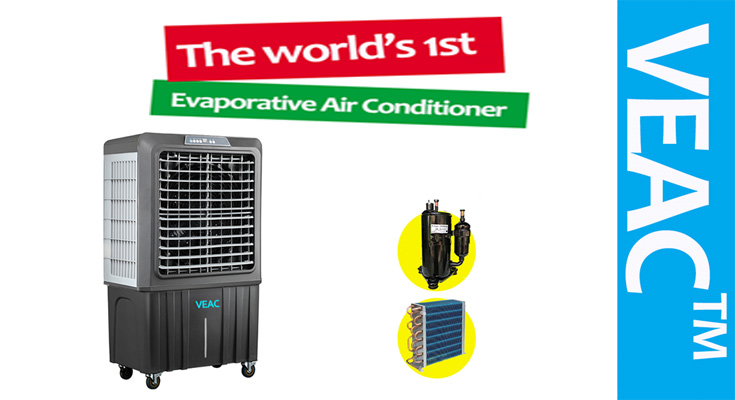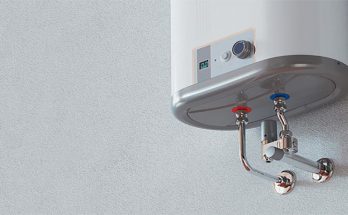The evaporative air conditioner is one part of the AC (air conditioner) system. The function of the AC evaporator is to be the opposite of that of the AC condenser.
The evaporator on the air conditioner is located between the expansion valve and the AC compressor. To be precise, the AC evaporator is located under the inner dashboard. Usually, the evaporator on the AC is equipped with a filter to blower into the cabin.
The evaporative air conditioner consists of several parts or components. The components of the AC evaporator are the same as the condenser, namely fin, and tube. Fin is finned to direct the flow of air exhaled by the blower. Meanwhile, the tube is a channel or hose as the way for the flow of freon or refrigerant that is sprayed by the expansion valve.
The way the AC evaporator works is the opposite of the condenser. If the condenser released heat from the freon through the air, then the evaporator in the air conditioner releases heat from the air to the freon or refrigerant. This will cause the air entering the blower to become cold or cool. The amount of heat absorbed corresponds to the amount of air heat dissipated into the air by the condenser.
The function evaporator on the air conditioner has a very important role in the AC system, so it needs to be studied further. What is the function of the AC evaporator? What are the types of AC evaporators? How does the AC evaporator work? All of these things will be discussed.
AC Evaporator Function
The function of the evaporative air conditioner is to absorb the hot air exhaled by the blower, the heat from the air is released to the freon or refrigerant in the evaporator. Also, due to the heat absorption that occurs in the freon, the freon or refrigerant which was originally in the form of liquid granules will evaporate or experience evaporation and change into a gas.
The blower will take the surrounding air and then blow it into the AC evaporator through the fins on the evaporator. These fins will direct the airflow through the tube or freon channel. Freon, which has a lower temperature than air, which is -30 degrees Celsius, will take or absorb the heat from the air exhaled by the blower. This is what causes the air that enters the cabin to be cold or cool.
Components and Types of AC Evaporator
Actually, in general, the components of the AC evaporator are the same as the condenser. The evaporator component in the air conditioner consists of two main components, namely fin, and tube. Fin function is to direct the air that is exhaled from the blower to the freon channels. Meanwhile, the tube is an evaporator component in the air conditioner that has a function as a channel for freon or refrigerant as well as a place for the evaporation of freon or refrigerant due to heat being absorbed from the air blown by the blower.
These two components have equally important tasks for the AC evaporator. Every vehicle that uses an AC system must have an AC evaporator. Although in use there are different constructions. Based on the construction, the AC evaporator has several types. The following are types of AC evaporators that are widely used in vehicles.
- Plate Fin Type AC Evaporator, is one type of AC evaporator which uses flat metal fins which are neatly arranged parallel to one another and a round tube.
- Serpentine type AC evaporator is one type of AC evaporator which is made like an S, which is curved. Flat tube.
- Drawn Cube Type AC Evaporator, is one type of AC evaporator that uses a flat, perforated metal fin as a path for the air that is exhaled from the blower. Meanwhile, the tube is round.
How the AC Evaporator Works
When viewed from how it works, the AC evaporator is very simple. However, the evaporator on the air conditioner has a very important role in the AC system. Without the work of the AC evaporator, the AC cooling system cannot work according to its purpose.
Freon in the AC will pressure lowered through the expansion valve and flowed to the AC evaporator, the freon temperature will drop dramatically to -30 degrees Celsius.
The air that is exhaled by the blower will be directed by the fins of the AC evaporator to pass through the channel or tube. That way the air which was originally high enough temperature will release heat to the freon or refrigerant which has a lower temperature. The heat released by air depends on the amount of heat released in the condenser. Therefore, the condenser also affects the performance of the AC evaporator.
The air will then be channeled into the cabin space in low-temperature conditions. Therefore, the air that is felt by the driver or passenger is cool or cold. The ability of the freon to absorb heat depends on how much freon is sprayed by the expansion valve.
The more freon is sprayed, the greater the ability to absorb heat. This depends on the needs of the vehicle. The greater the AC load, the more freon will be sprayed. Conversely, if the AC load is getting less, the freon that is sprayed will also be less.
Given the important function of the AC evaporator, it is necessary to carry out various treatments so that AC performance can be maximized. Also, currently, there are many technologies such as anti-frosting to prevent freezing in the AC evaporator.
Above is the discussion about the AC evaporator. The discussion starts from the function of the evaporator on the air conditioner, the components and types of the AC evaporator, and how the AC evaporator works. Hope it is useful.




